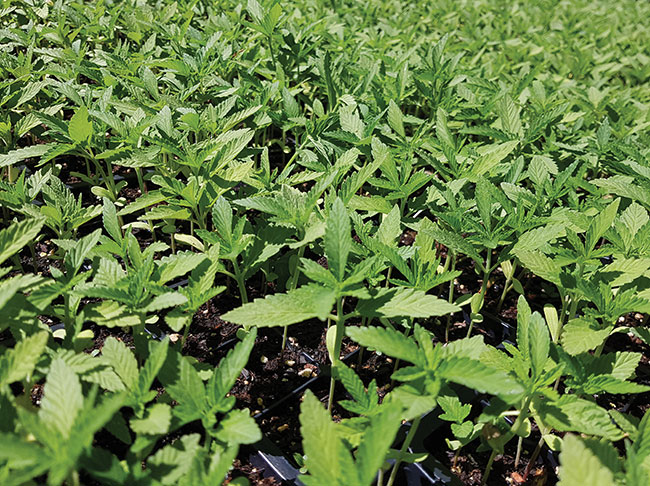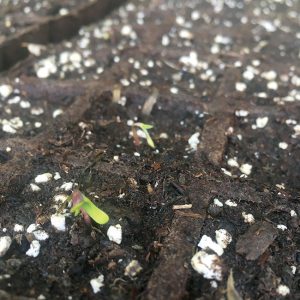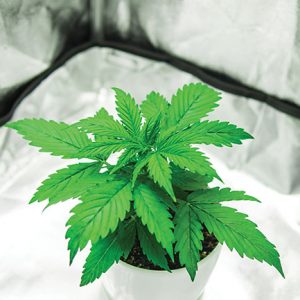
Features
Cannabis
Retail
Cultivating a space for cannabis at retail
With home gardeners expanding into cannabis, garden centres can fill a key gap in supporting this growing segment with the right tools and horticultural advice.
May 11, 2021 By Anne-Marie Hardie
 With a large segment of cannabis home growers unable to access hydroponic shops, garden centres could tap into this segment by providing the right tools and advice. Photo credit: Inplanta Biotechnology.
With a large segment of cannabis home growers unable to access hydroponic shops, garden centres could tap into this segment by providing the right tools and advice. Photo credit: Inplanta Biotechnology. Legalizing cannabis has resulted in an expansion of home gardeners growing for both its recreational and medicinal properties.
Although current legislation does not permit garden centres to supply seeds and seedlings, they can still play a significant role in the cannabis space. This budding sector of horticulture provides an opportunity to equip home growers with both the supplies and education needed, as well as establish a welcoming space.
Understanding the Cannabis Act
“The federal regulatory model right now allows cannabis nurseries to sell plants and seeds into the provincial system,” says David Brown, StratCann Services Inc., B.C. The main hurdle is at the provincial level, as provinces are given the jurisdiction to manage sales as they see fit.
Currently, licensed cannabis nurseries can sell to other holders of a commercial cannabis licence, shares Dr. Darryl Hudson, researcher at cannabis nursery InPlanta Biotechnology in Lethbridge, Alta. In most cases, licence holders are micro-cultivators looking to supplement their supply.
“Even with the nursery license, there is no way to distribute live plants directly to the public,” states Hudson. Despite these challenges, he is optimistic about the potential for the industry.
“As the market becomes more aware of cannabis genetics, we will start to see a more discerning clientele that will actively seek quality [plants].”
The role of the garden centre
The profile of the at-home cannabis grower is extremely diverse, ranging from internet-savvy Generation Z and Millennials, to seniors who are looking for judgement-free support and advice.
“There is a large segment of home growers who don’t have access to, or are not comfortable accessing the hydroponic shops,” says Brown. “They are looking for a space where they can safely and comfortably ask questions and obtain the resources that they need.”
Garden centres have both the expertise and knowledge to support these budding growers. Some may have already established a rapport with their local garden centre, but find it tough to initiate a conversation about the stigma-infused crop. The key is to create a conducive environment, including equipping staff with strategies that can help put the customer at ease.
“It’s really important to know your audience,” says Hanna Shanes, chief compliance officer and vice-president of operations at 365 Cannabis in Denver, Colo. “Encourage staff to have an open conversation about growing so that they can be available to help your customers along their growth journey.” This dialogue can also help retailers discover the type of products and education that their customer base is seeking.
Supplying a growing market
Dr. Youbin Zheng, professor at the University of Guelph, Ont., is both a researcher and educator for the industry. He is committed to educating the public about cannabis, and speaks to horticulture associations across Ontario. Through his talks, he has discovered that there is a large segment of cannabis home growers who would benefit from the support of their local garden centre.
“Consumers can now grow their own plants but are uncertain about which products to use to help them grow successfully,” says Zheng.
The cannabis industry presents an opportunity to carry an extensive range of products, several of which cross over with other horticulture segments, particularly indoor and organic gardening. Common supplies include pots, fertilizers, LED lighting, growing media, hydroponic systems, and trellises.
Be it flowers, vegetables or cannabis, signage and product descriptions can be used to highlight the different types of plants supported by these resources. This simple strategy demonstrates that the garden centre is cannabis-friendly, without turning away those customers who may still be resistant to the industry.
Asking questions to help understand the consumer’s at-home set-up is essential to directing them to the right products. At a bare minimum, Zheng recommends stocking up on soluble and controlled release fertilizers, as well as a variety of plant growing media (i.e., potting mixes) to support the different types of growing environments. He suggests stocking growing media of different grades ranging from fine, medium to course, so customers are able to select for their needs at different growing stages and for different pot sizes and shapes.
“Growing media have three main functions: one is to hold the plant physically, one is to supply water and nutrients, and the other is oxygen,” says Zheng. “If the oxygen drops to a certain level, the plant will become more prone to disease. Too much water will cause root rot.”
To support these plants from seed to harvest, Zheng recommends using different sizes of pots at different growing stages. Large, heavy pots are essential for the final stage when growing outdoors.
“Before harvest, buds become heavy and the weather can be windy. Heavy pots can support plants from being blown over. Of course, if you grow plants in ground then you do not need pots, however, trellises may be necessary for supporting the plant.” He also recommends carrying netting, professional-grade shears for cuttings, solutions to clean the oil-intensive resins, and mason jars for curing the harvested plants.
Indoor cannabis home growers may be interested in finetuning their growing environment, in which case Zheng recommends looking into white LEDs, grow tents and thermal meters, as well as soil and air moisture sensors.
“Our research demonstrated that the more light the better for cannabis yields. When sourcing LEDs, you may want to have fixtures which can supply high light intensities. You will also want to ask the manufacturers to provide measurements of light intensities at different distances below the lighting fixture to guide growers in adjusting the height of their lights.”
Topical and edibles are other industry segments that the garden centre could support. Materials include tea bags, essential oils, baking equipment, and natural beauty ingredients. “People also use cannabis to make a balm. For these individuals, a smaller jar will be helpful as well, and even beeswax and coconut oil,” says Zheng.
Gearing up
For garden centres who have noticed a considerable demand for items used in cannabis cultivation, they may want to follow the lead of hydroponic stores by stocking specialty items.
“I think a real challenge if I were a local store owner, is to know at what point to get that random item a customer is requesting,” says Betsy Samuelson, Humboldt Seed Company at Nymera in Westwold, B.C. “If there are only a few requests, consider if the product could be used for other applications.” Tracking requests can help retailers determine which products are in demand and could be stocked.
This dynamic sector of the industry is rich with opportunity. The garden centre could easily become a go-to resource for supplies and information and perhaps eventually, the plants themselves.
It’s about creating a space that supports this expanding community of home growers. “Don’t shy away from this space; take part in this incredible journey while keeping in mind the business fundamentals,” says Shanes. “Don’t overcommit yourself…just be open to it and take the opportunities as they come.”
Print this page

